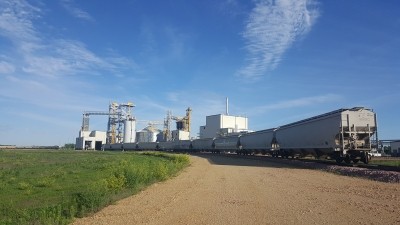Low cost, high purity fish protein isolate hits global market
Last year, GE Water and Process Technologies and Norcape Biotechnology turned their patented membrane filtration and separation technology to the fish protein industry.
Talking exclusively to FoodNavigator.com, Mark Rottmann, Market Director, Process Equipment Programs, said the supply of food grade fish protein isolates is already available.
It was not GE’s intention to position the fish ingredients as an alternative to whey protein isolates, said Rottmann, although the price of the fish-derived ingredients make it a cost-effective option for food manufacturers.
“This is a high end ingredient, but not a high priced ingredient,” he said. “The cost of the isolate is about $4,000 per tonne, which is $4 per kilogram.”
Membrane breakthroughs
The patented membrane system works by having one stream enter and three streams exit. The membrane system inside separates the main stream into a high fat plus protein stream, a zero fat plus protein stream, and a biogenic fraction. The fishiness is removed by the membrane, since it removes the oil and fat.
Rottmann said that the technology was developed about five years ago in Europe for the fish meal industry. While initially aimed at producing protein-rich feed for the animal feed industry, Rottmann said that it was known that the technology could be turned towards food.
So where do we stand on the food-grade protein? “Food is right now,” said Rottmann. “There is a producer putting in plants that are sanitary grade. This means it can produce food or feed.”
“The protein will be commercially available in January or February of 2009,” he added, indicating that several large multinational food manufacturers are already interested in applying the fish protein to their products.
The plants, based in South and North America, and Europe, will be up to full capacity by the end of 2009, said Rottmann, which means production in the region of 500 to 2,000 tonnes of food grade protein.
Ingredient grades
The fish proteins are said to be available in two forms. The first is a powder concentrate (FPC) with protein levels of about 70 per cent and fat levels of about 18 per cent. The second is an isolate powder (FPI) with protein levels of about 90 per cent, and zero fat.
From a food ingredient perspective, anywhere whey protein isolates and concentrates are used, the FPC/FPI can be seen as a direct replacement on a partial protein basis, said Rottmann.
Potential food applications include soups, bullions, or meat patties.
“It’s a wonderful protein source with a great amino acid profile,” added Rottmann. “The taste profile is typical of a protein hydrolysate.”
Feeding the world?
“Think about the ability to produce a protein powder at this price point,” said Rottmann. “This could be a base protein ingredient for people who don’t have access to high protein meat due to lack of transportation, refrigeration, and so on.”
Food Navigator did the mathematics, which suggests that it would cost approximately $0.20 to ensure people consume the recommended intakes of protein (assuming a daily reference value (DRV) of 50 grams).
“The best protein is fish,” said Rottmann.





